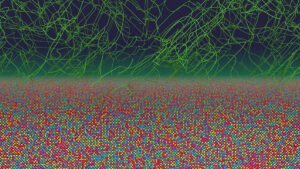
A groundbreaking camera capable of capturing images at a speed of one trillionth of a second has been developed by a team of scientists. This remarkable advancement allows researchers to observe atomic activity with unprecedented clarity, significantly enhancing our understanding of materials in motion. The camera’s speed is approximately 250 million times faster than conventional digital cameras, which typically operate at about one four-thousandths of a second.
The newly developed system, referred to as the **variable shutter atomic pair distribution function** (vsPDF), provides insights into a phenomenon known as **dynamic disorder**. This occurs when clusters of atoms move in specific ways within a material, influenced by factors like temperature changes or vibrations. While the full implications of dynamic disorder are not entirely understood, it plays a critical role in determining the properties and reactions of various materials.
Revolutionizing Materials Science
Simon Billinge, a materials scientist at **Columbia University**, emphasized the significance of this innovation: “It’s only with this new vsPDF tool that we can really see this side of materials. With this technique, we’ll be able to watch a material and see which atoms are in the dance and which are sitting it out.”
The ability to capture rapid movements of atoms offers a more precise view of time, which is essential for studying fast-moving objects. For instance, using a slower shutter speed in a sports photo results in blurred images, whereas vsPDF eliminates this issue, allowing for clearer snapshots of atomic behavior.
To achieve this extraordinary speed, the vsPDF system utilizes **neutrons** to assess atomic positions instead of traditional photography techniques. By tracking how neutrons interact with materials, scientists can measure surrounding atoms. Adjustments in energy levels correspond to changes in shutter speed, enabling researchers to distinguish dynamic disorder from static disorder, which refers to background vibrations of atoms that do not enhance material functionality.
Applications and Future Research
The research team focused on **germanium telluride** (GeTe), a material known for its ability to convert waste heat into electricity or electricity into cooling. Their findings revealed that GeTe maintains its crystalline structure at varying temperatures. However, at elevated temperatures, the material exhibited increased dynamic disorder, with atoms transitioning motion into thermal energy that aligned with the material’s spontaneous electric polarization.
Understanding these physical structures is vital for advancing **thermoelectrics**, which could lead to improved materials and devices, including those powering **Mars rovers** when solar energy is not available. The enhanced comprehension derived from the vsPDF observations could pave the way for developments in energy materials.
Despite the promising capabilities of the vsPDF technique, the researchers acknowledge that further work is needed to establish it as a standard method for testing in the field. They expressed optimism in their paper published in **Nature Materials**, stating, “We anticipate that the vsPDF technique described here will become a standard tool for reconciling local and average structures in energy materials.”
This innovative camera marks a significant leap forward in materials science, offering new avenues for research and application in various technological fields.







